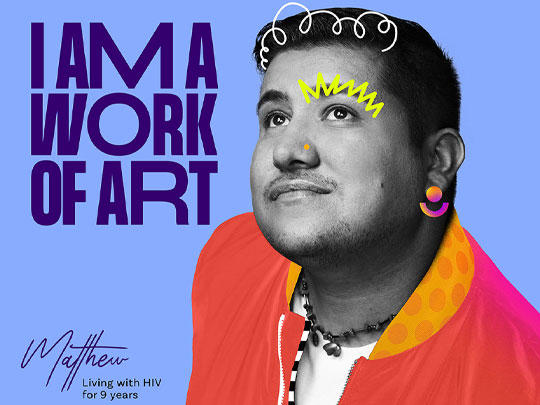“It was a Journey” to Achieve Viral Suppression. The Right Provider Helped.
Topics
These days, Matthew likes to celebrate life doing “the typical things” with family and friends. “We like to get together and watch UFC [Ultimate Fighting Championship]. Or gather on holidays to grill burgers.” For Matthew, living life as a work of ART is “living life full of prosperity.”
But getting to this point in his life and with his treatment for HIV was “a journey,” as Matthew likes to say. When he was diagnosed with HIV in 2012, he started his antiretroviral therapy (ART) right away. “I was very scared,” Matthew says. “I was fearful of the future, not knowing what the future held. And felt as though my life was spiraling out of control.”
In spite of his fear, Matthew forged ahead and, 6 months after starting ART, he moved to the Phoenix, Arizona area. He found his healthcare “home” with the Phoenix Indian Medical Center (PIMC), an Indian Health Service facility that provides health and health care education services focused on primary and prevention care to American Indians/Alaska Natives who are enrolled members of a federally recognized tribe. PIMC has been instrumental to Matthew’s journey to viral suppression.
“I’ve always felt as if I was a part of a much larger community there,” Matthew says. “I receive annual Christmas cards from them. I really know everyone there so well. I feel like they know me. It’s just easy for me to come in, to have conversations, to talk about my health. Without them, I don’t know what I would have done.”
Finding the right provider is an important part of achieving viral suppression, the goal of ART. HIV medicine or ART can reduce the amount of HIV in the blood (also called viral load) to an undetectable level—a level so low that a standard lab test can’t detect it. People with HIV who take HIV medicine as prescribed and get and keep an undetectable viral load can live long and healthy lives and will not transmit HIV to their HIV-negative partners through sex. This is sometimes referred to as treatment as prevention or “undetectable = untransmittable” (U=U).

Of Navajo and Latino heritage, Matthew is one of the 10 creative partners who share their stories as part of “I am a Work of ART,” the national viral suppression campaign recently launched by the HHS Office of Infectious Disease and HIV/AIDS Policy (OIDP) with support from the HHS’ Minority HIV/AIDS Fund through the Ending the HIV Epidemic (EHE) initiative. The vibrant, life-affirming campaign encourages people with HIV who are not in care, or in and out of care, to seek care, get into care, and achieve viral suppression by taking ART. Playing off of the dual meaning of “art,” the campaign encourages people to find a provider that is right for them by visiting HIV.gov/ART so they can live their lives as a “work of ART.”
The “I am a Work of ART” campaign is currently in eight cities across the country—Atlanta, Baltimore, Cleveland, Dallas, Los Angeles, Miami, Tulsa, and Washington, DC—as well as in other communities focused on increasing viral suppression among people with HIV. The Spanish-language version of the campaign, “Celebro mi salud,” was released at the US Conference on HIV/AIDS in Puerto Rico in early October, and the campaign’s reach will be even further extended with the addition of new creative partners and campaign materials.
Right now, anyone from any community can use the campaign’s messages and materials—in English and Spanish—to encourage viral suppression. These materials feature different creative partners and include video and audio public service announcements, posters, and flyers, as well as rack and business cards. If you are looking for a provider in your area to start or re-start ART, or if you are looking for more information about the campaign or to download materials, please visit HIV.gov/ART.